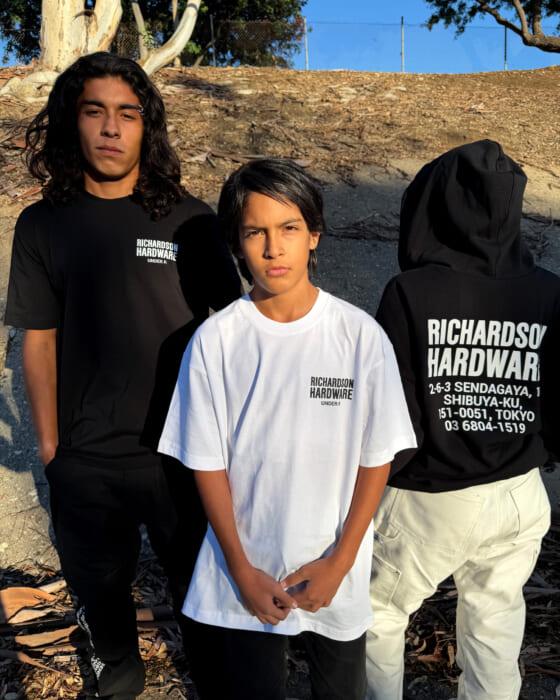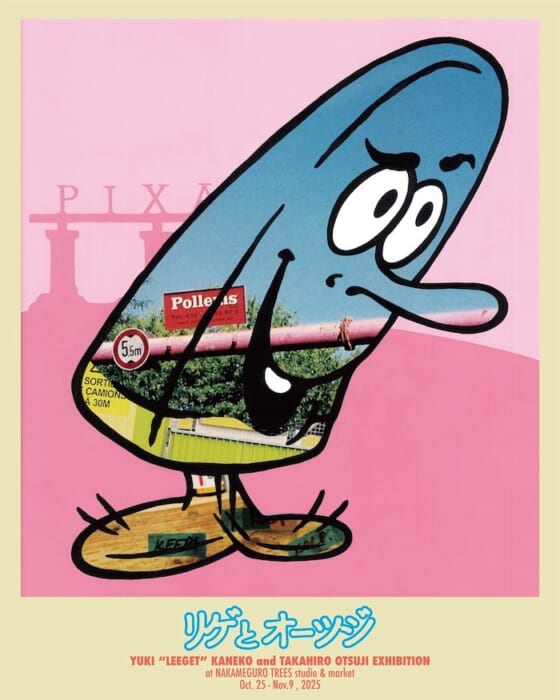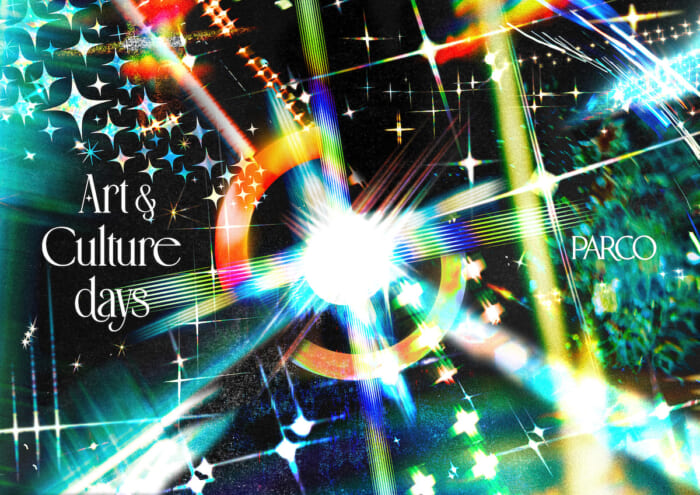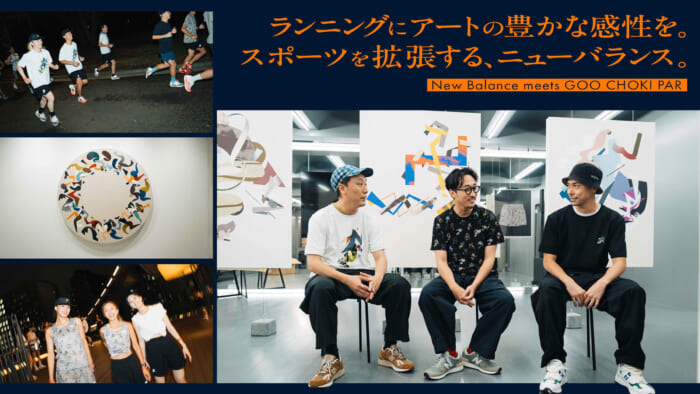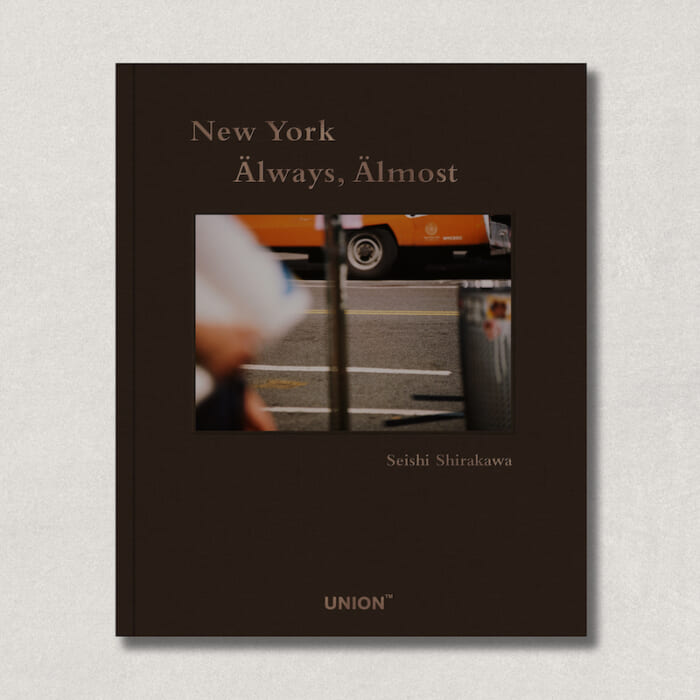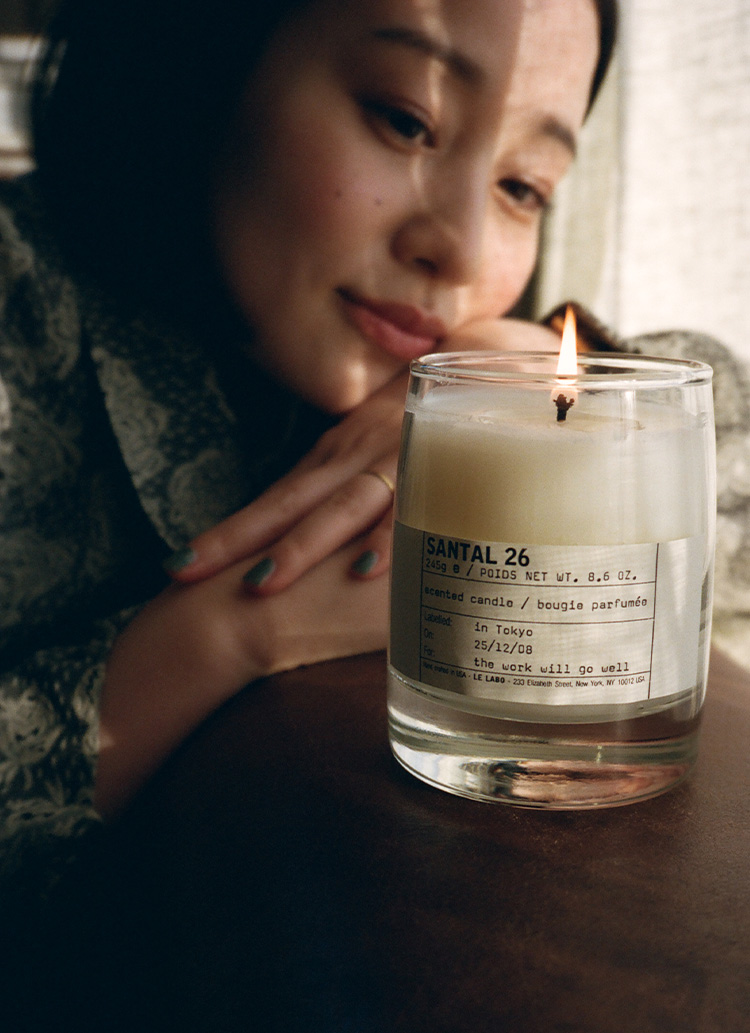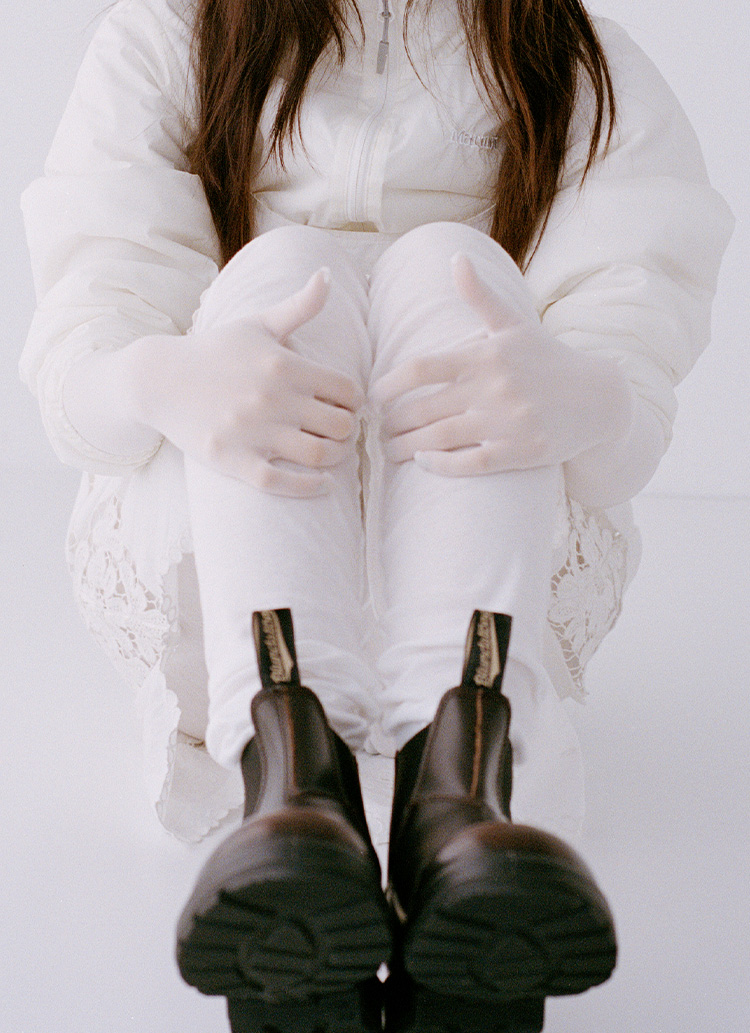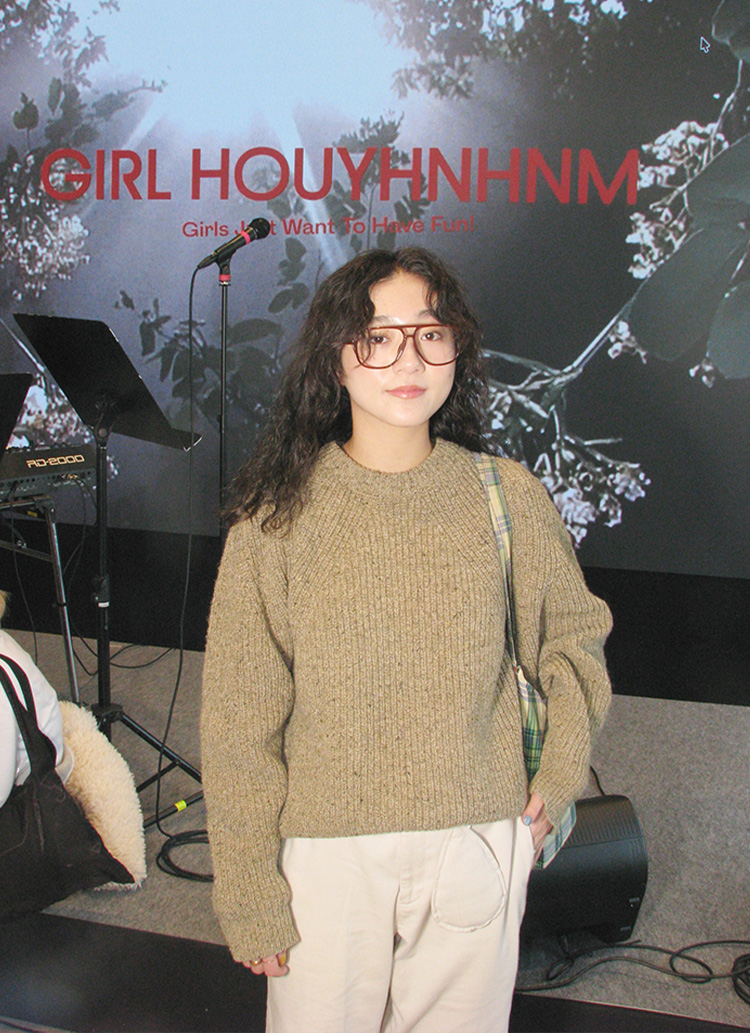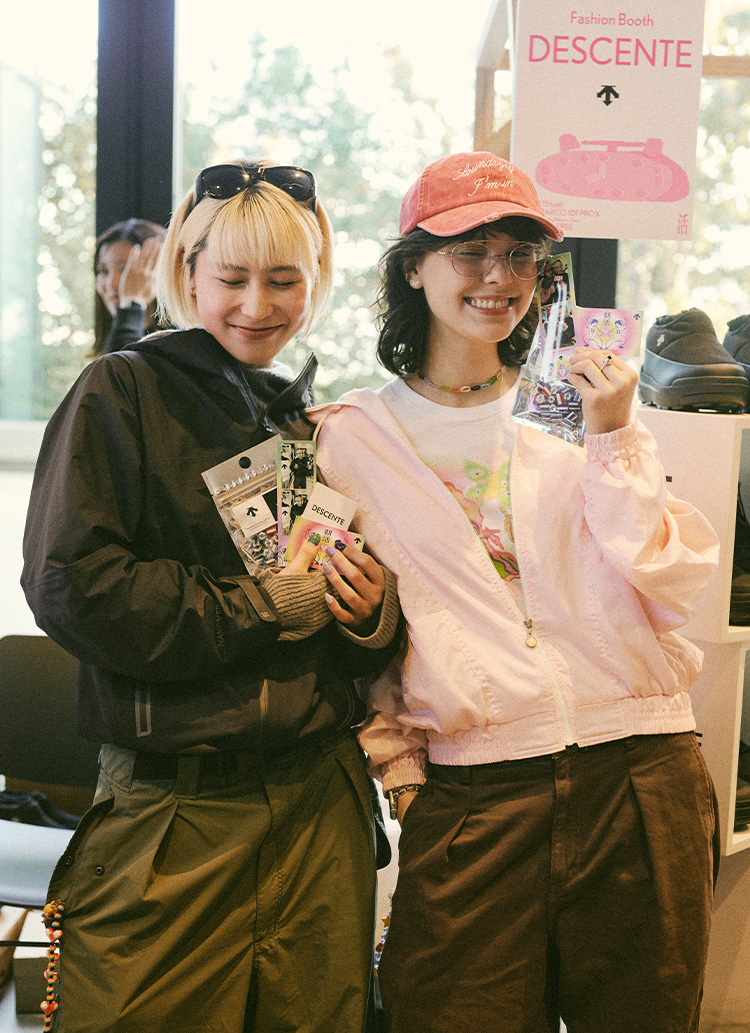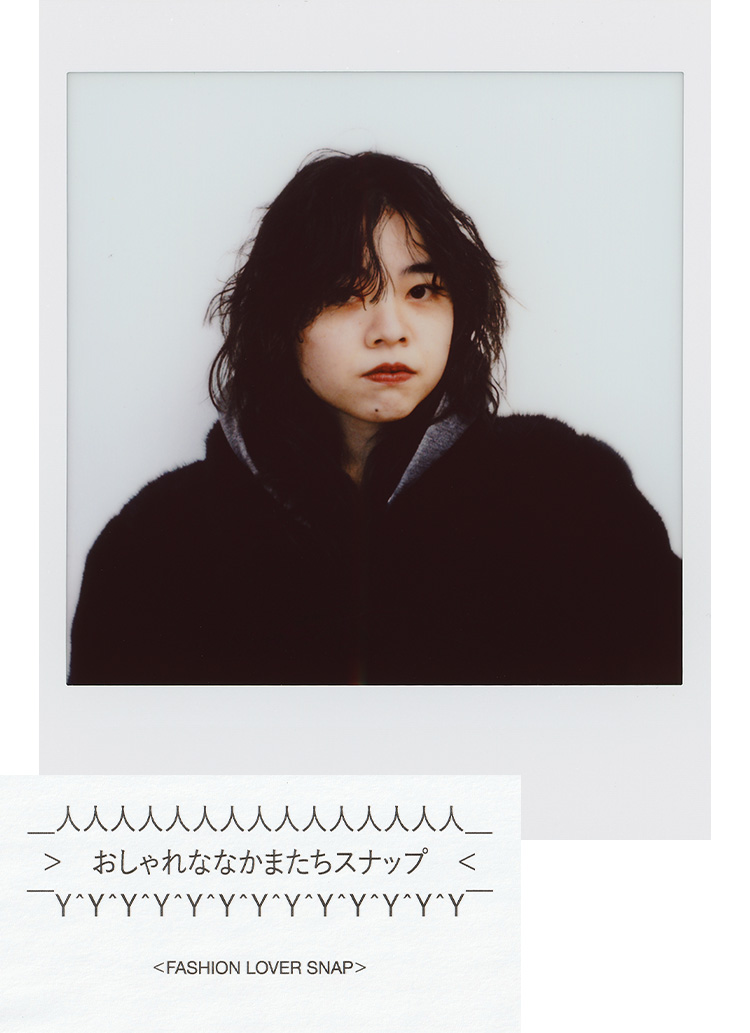Mihiro Hosoi, "Lenna," 2019.
Photo_KIOKU Keizo
Photo Courtesy_NTT InterCommunication Center [ICC].
The Japan Media Arts Festival is being held at the National Museum of Emerging Science and Innovation (Miraikan) in Odaiba, Tokyo, for nine days from September 19 (Sat) to 27 (Sun). This comprehensive festival of media arts honors outstanding works in the four categories of art, entertainment, animation, and manga, and provides opportunities to view the award-winning works. This year, the 23rd edition of the festival, received 3,566 submissions from 107 countries and regions around the world, and continues to grow as an international festival that looks at the diversifying expressions of our time.
In the midst of this, a remote conversation was held between Yoshihiro Hosoi, who won the Newcomer's Award in the Art Division of the 23rd Japan Media Arts Festival for his sound installation "Lenna," and Izumi Shirahama, who is active in media such as magazines, TV, radio, and advertising as Labrie, and also works in poetry, reading, writing, music, and other unconstrained forms of "words" using various exhibition methods. This is a remote conversation with Izumi Shirahama, who is active in the media as L'abri, including magazines, TV, radio, and advertisements, as well as in poetry, reading, writing, music, and other forms of "words" using a variety of exhibition methods. Although they have never met before, their various sensitivities overlapped.
PROFILE
Born in Aichi, Japan in 1993. He began to experience contemporary music through choral singing in high school, and while a student at Keio University, he participated in numerous compositions, live performances, and sound installations as a voice player. He has also been creating unique content such as stage productions while bridging musicians and technologists with projects that utilize his background as a musician. June 2019 release.
In November of the same year, Miyuhiro Hosoi + Shun Ishiwaka + YCAM presented a new concert piece "Sound Mine" at the Yamaguchi Center for Arts and Media [YCAM].
PROFILE
. was born in 1989. While working in the media as Labrie in magazines, TV, radio, and advertising, in recent years she has been expressing the "words" that come from within herself as Izumi Shirahama . held her first solo exhibition "Memory of Words Exhibition" in 2018 and a solo exhibition "The Relationship between Digital and Me, I am Apparently a Number Exhibition" in 2019.
Instagram: @loveli_official
Reading by ear . Seeing with sound.

Mr. Hosoi uses "sound" and Mr. Shirahama uses "words" as a method of expression. You use "sound" as your method of expression, while Shirahama-san uses "words" as one of his methods of expression. Did you find any similarities between your works and Hosoi's?
Hosoi: I make a conscious effort not to use words in my work, so words are strong for me. Also, because of my experience, I had a strong negative image of them and had been trying to create works with something other than words, so I had never faced them with the intention of looking at works of poetry. . but I first realized that what I was trying to do could be done so much with words.
By "seeing" something, I can rethink something within myself. I think it is because the work is written in a way that I was unaware of, and it is the first time that I am triggered to think about it. I have been working on my own "sound" works, so I thought I was in a completely different place from myself, but I realized that the sensations I was aiming for were very close, just in a different direction.

Shirahama: Words are just letters when they are made into fonts. . But I believe that at its root, it is "sound. . Therefore, I also believe that there are two ways of conveying words: "seeing" words and "hearing" words. I also use the expression "read the words with your ears" as a way of expressing the exhibition , and I want people to read the words with their ears. I want people to read the words with their ears. In that sense, I felt that we are similar, or that the fundamental base of what I want to convey is the same.
Hosoi: Yes, that's right. I now realize that "reading by ear" is "seeing by sound" and "seeing by ear" when it is sound, and that they are communicating the same thing in different directions, and that they are probably the same in terms of function.
What do you think about the necessity of digital and analog involvement in this context?
Hosoi: In my past works, I have often used technology to a great extent, and the new work that I am working on now is also being developed and is available at ....... However, in the end, I am using digital technology to artificially achieve a feeling that can only be received in a very analog way. I use digital technology to artificially achieve a feeling that can only be received in an analog way. Technology is only a tool.
Technology is constantly being updated, so if I have a concept, that concept may be outdated by the next year, for example. Recently, I have been thinking that digital technology is "surface" and analog technology is "representation. Analog is "representation. I think this is what we should think about.
Shirahama: I am with you that technology is only a tool. I too must have an analog temperature within the digital. . I am wondering why it is that even in the midst of digital, analog things can be communicated. What I find strange is that even in the midst of digital technology, analog things can be conveyed, which I think is a good way to deal with digital technology. I think it is a matter of how much you can convey an analog feeling, a human-like temperature, in the midst of the digital world. . So, I don't feel the need to use digital if I don't have an analog temperature. Even talking online like this is different from talking in person.
Hosoi: In terms of exhibits, I think the good thing about technology is that it becomes an extension of the human being. I am creating works by recording my own voice over and over again, but of course there are machines and a lot of speakers. I can't physically do it by myself, but if I get along well with the machine, I can make it happen. . I deal with technology because I think there will be things that I can receive physically by making "sound" of it in an analog way.
Shirahama: I think there is a "physical experience" too. . It is a totally different way of showing poetry than just reading it aloud in words. There is a sense of being able to use digital technology to show the different aspects of words and sounds.
Yamaguchi Center for Arts and Media [YCAM]
scopic measure #16
Mihiro Hosoi "Lenna
Photo_Yasuhiro Tani
Photo Courtesy_Yamaguchi Center for Arts and Media[YCAM]
What do you think is the role of media, art, and the arts?
Hosoi: For me, media is nothing more than something that conveys the essence of what is expressed. However, when I look at works that use media, media art does not mean that the media is simply equipment or machines, but rather a way of expressing media as a medium that changes the way we look at the world. It is a way of expressing media as a medium that changes the way we see the world. It makes us question media such as sound and displays. It is something that makes you think, "What was this all about? I think it is something that makes you think, "What was the original purpose of this?
Sound Mine
Photo_Yasuhiro Tani
Courtesy of Yamaguchi Center for Arts and Media[YCAM]
Shirahama: The role is to make an entrance for someone. I think that when you are living, you are always limited by your own subjectivity, your own idea of what is right and proper, and so on. I think it would be meaningful if I could make a detour to a different place and let in something different from myself, something that makes me feel a little uncomfortable, or something like that. I am making an entrance, but if I make it in my own way, the entrance will look hard or thick, so how can I make it softer? I think it is a kindness to the other person when I express myself to make the door easy to enter. I think it is how I can express that kindness in my work.
Hosoi: When I heard the word "discomfort" in Izumi-san's story, I thought to myself, "Indeed. . It's like a work of art is created by an artist and then it is shown in a one-sided way. I think the arrow is pointing in this direction, as if you are going to see something by a major artist and want to take something from it, but when you see something and think, "That's different," it means that you have a different axis to think it is different. Then, what about this one?" . If I like it, I will say, "Why do you like it? If I liked it, I would say, "Why did I like it? I think, "Well, what about this one? What do I like? What am I not good at? I think it is a very indirect way of gaining insight into what you like and what you are not good at.
Shirahama: I think that people who go to see exhibitions and look at artworks are interested and will look at them, but people who are not used to going to artworks and museums may see them as a very high hurdle. In response to that, they sometimes assume, "I don't know, so I won't see it," so they look at the exhibit unconsciously....
Of course, Mr. Hosoi's expression is a work of art, but if the "experience" of not thinking of it as a work of art makes you feel it is a work of art, or if you feel that you are unconsciously looking at the exhibition even though you were far away from it, or if you naturally feel that you "like" or "dislike" it, then I think the existence of a work of art would have a different meaning. I think that if such an "experience" of the work makes the viewer feel the work, or if the viewer naturally feels a sense of "liking" or "disliking" the work, then the existence of the work as a work of art will take on a different meaning.
Hosoi: ...... glad to hear it.
My original experience was in high school choir, where we had about 100 people doing contemporary music . Every year we would have a concert in a concert hall, and if there were 100 people on stage, it would be like having 100 channels of speakers. Normally, you would hear it from the audience, but I was in the middle of it, so the sound was generated around me, the space was ringing, and the overtones were sounding again.... I can't forget a space like that. That is something you can only do if there are a lot of people. I have always had the feeling that I really enjoyed that sound space.
I was also introduced to media art, and I thought that with this, I could recreate the original experience of sound in a different way, which I thought was "great! I thought that I could recreate the original experience that I had at that time. I have been thinking that it would not be possible to reproduce exactly the same thing, but rather to transform the same sensory experience into a work of art. . So I am always in pursuit of that original experience.
- Text_Hanako Irisawa
The 23rd Japan Media Arts Festival Award-winning Works Exhibition
Dates: September 19 (Sat) - 27 (Sun)
Place: National Museum of Emerging Science and Innovation (Miraikan, Odaiba, Tokyo)
Admission: Admission fee (advance reservation required)
*The exhibition of award-winning works will be held in some areas of Miraikan (1st Floor Exhibition Hall and 7th Floor). Reservations are required to visit these areas. Admission is free if you only wish to see the exhibition of award-winning works. Reservations can be made atOfficial WebsiteIt is possible from .
*Reservations for each participating program require a reservation for a visit to the exhibition, a reservation for a video screening, and a reservation for a workshop. Reservations for all of these programs can be made through the official website above.
*If you wish to visit Miraikan's permanent exhibitions (3rd and 5th floor exhibition floors, 1st floor ASIMO demonstration, 6th floor Dome Theater, etc.), you will need to purchase a separate ticket for Miraikan (online advance reservation). For detailsNational Museum of Emerging Science and Innovation (Miraikan) Official Websitefor more information.
The 23rd Japan Media Arts Festival Special Website
A special website has been launched to allow visitors to enjoy the world of Japan Media Arts Festival online! The website will feature a series of talk events and comments by the award winners, as well as a VR tour of the festival site, filmed with a 360-degree VR camera. Talk events will be held every day during the period of the Media Arts Festival, with the award winners and leading experts in their respective fields taking the stage to talk about the creation of their award-winning works, their thoughts on their works, and other topics. In addition, a 360-degree VR camera will be used to capture images of the venue, allowing visitors to experience a VR tour as if they were actually there.
The world view of this year's Media Arts Festival can be accessed and enjoyed from anywhere in the world. This special site will be open to the public until Saturday, October 31, 2012.
Special Website


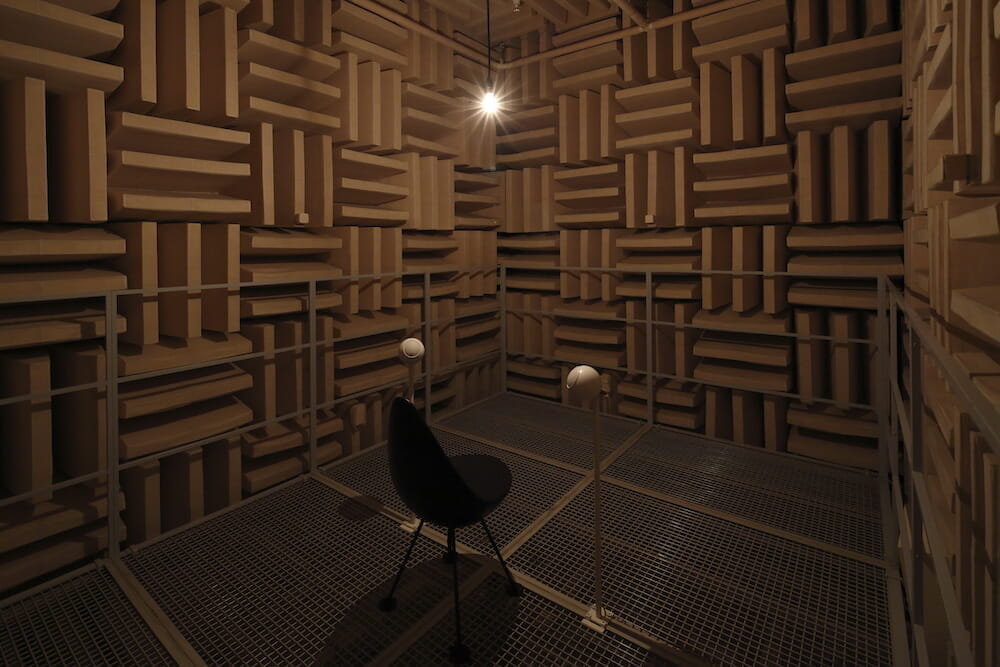

![Report on the retrospective exhibition of Takenobu Igarashi to commemorate the 50th anniversary of Sapporo PARCO. Immerse yourself in the history and culture of PARCO at "PARCO ART & CULTURE DAYS. [VOL.2 SAPPORO ]](https://www.houyhnhnm.jp/wp-content/uploads/2025/11/810A3804-1-700x467.jpg)
